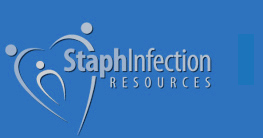It’s encouraging to see MRSA rates dropping in hospitals that adopt strict programs to reduce unneeded antibiotics. But while MRSA is decreasing in some hospitals, an even more virulent form of MRSA is increasing at an alarming rate in the community, especially in children.
Community-Associated MRSA (CA-MRSA) can be found in gyms, schools, offices and most other public places. CA-MRSA is often faster spreading and more dangerous than Healthcare-Associated MRSA (HA-MRSA). Community MRSA can strike otherwise healthy people who have never been hospitalized. Recent studies show these infections are increasing most rapidly in children.
According to the Journal of Pediatrics, MRSA in children increased 10-fold between 1999 and 2008 (Pediatrics, Vol 125, 2010). This is a huge increase in infections in a fairly short period of time. Most of these infections were community MRSA.
MRSA in children increases flu risk
Because children have less developed immune systems, Staph and MRSA can be more challenging and dangerous. A new study shows that children with MRSA are at higher risk for catching flu and other illnesses and the severity of other illnesses is often greater (Pediatrics 2011). There’s also evidence that chronic staph infection in children can lead to health challenges as adults.
How to reduce the risk of CA-MRSA and Staph
Thankfully there are very effective ways to reduce the risk of catching Staph, MRSA and other infections in the community. The following page has excellent tips for avoiding Staph infection in kids: preventing MRSA infections in children.
To your best health,
Michelle
Microbiologist and Natural Health Expert




